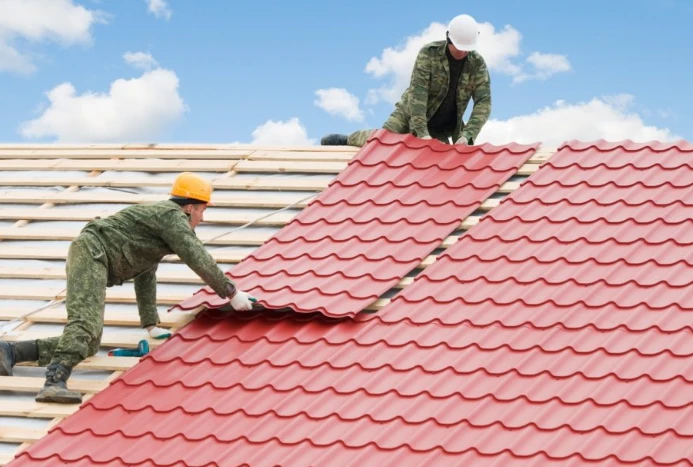The Homeowner’s Guide to Roofing That Lasts
Why Residential Roofing Is More Than Just Shelter
A roof isn’t just something that keeps rain out. It’s a vital part of your home’s structure, efficiency, and design. When it’s done right, it protects your family, saves energy, and boosts curb appeal. But when it’s neglected, it becomes one of the most expensive problems you’ll face as a homeowner. Investing in proper residential roofing care ensures your home remains strong, dry, and secure through every season.
Understanding the Structure of a Residential Roof
Your roof is a layered system — each component has a purpose. There’s the decking (base), underlayment (moisture barrier), shingles or tiles (outer protection), and ventilation (temperature control). If any layer fails, the entire system is compromised.
That’s why every homeowner needs to understand the basics of residential roofing. The visible surface might look fine, but unseen issues like leaks, insulation gaps, or trapped moisture can slowly damage your home’s foundation and walls. Regular inspections and timely repairs keep these small issues from becoming major financial headaches.
Common Problems Homeowners Overlook
Some roofing problems are obvious — leaks, missing shingles, visible cracks. But others hide in plain sight:
- Moss or algae growth: Looks harmless but traps moisture and weakens materials.
- Poor ventilation: Causes mold, attic condensation, and higher energy bills.
- Curling or blistering shingles: Early signs of weather damage.
- Loose flashing: One of the most common causes of interior leaks.
If you catch these problems early, you can often avoid a full replacement. Many residential roofing issues start small but escalate quickly without attention.
Choosing the Right Materials for Your Home
When homeowners consider re-roofing, the material is often their biggest decision. Asphalt shingles dominate most homes due to their affordability and versatility. However, other options like metal, slate, and clay tiles offer longer lifespans and distinct styles.
In the middle of this decision, working with a qualified residential roofing specialist ensures you choose the right materials for your budget and climate. For example, metal roofs reflect heat and last up to 50 years, while asphalt is cost-effective and ideal for quick installations.
Energy Efficiency Starts on Top
Your roof affects how your home breathes. Energy-efficient roofing systems can cut utility bills by reducing heat absorption in summer and preventing heat loss in winter. Light-colored or reflective shingles help keep interiors cooler, while proper attic insulation maintains warmth during cold months.
Modern residential roofing systems use materials designed to reflect sunlight and minimize UV damage, helping maintain stable indoor temperatures without overworking your HVAC system.
The Role of Ventilation and Insulation
Ventilation is often overlooked but critical. Without airflow, your attic traps moisture and heat, leading to mold growth and roof deterioration. Insufficient ventilation also shortens the lifespan of shingles. Proper insulation and ventilation work together to protect your roof from both the inside and outside.
A well-designed residential roofing system balances these two factors, keeping your home energy-efficient and your structure sound.
Regular Maintenance: The Real Secret to Longevity
Most roofs fail early due to neglect, not poor materials. Homeowners can add years to their roof’s life with simple maintenance habits:
- Clean gutters regularly to prevent water pooling.
- Inspect shingles after heavy storms.
- Trim nearby tree branches to avoid debris accumulation.
- Schedule professional inspections twice a year.
Routine care is the difference between a 20-year and a 30-year roof. Even small cracks, when sealed promptly, prevent massive structural damage later.
Weather and Regional Challenges
New York’s unpredictable weather demands durable roofing systems. Heavy snow, high winds, and freeze-thaw cycles all test your roof’s endurance. Water that freezes in cracks expands and worsens the damage over time. Choosing quality materials and ensuring proper drainage protect against these seasonal challenges.
A professional residential roofing contractor knows how to build for these conditions — reinforcing edges, sealing flashings, and using weather-tested materials that withstand local climates.
When to Repair vs. When to Replace
Deciding between repairing and replacing comes down to the roof’s age and the extent of damage. If your roof is under 15 years old and damage is isolated, repairs often suffice. However, recurring leaks, widespread curling shingles, or sagging areas indicate deeper problems.
An expert inspection can reveal whether patching is cost-effective or if full replacement will save money long-term. Reliable residential roofing specialists always prioritize structural integrity over quick fixes.
Why Professional Installation Matters
DIY repairs might seem like a budget-friendly option, but roofing demands precision. Poor installation can void warranties, cause leaks, and shorten your roof’s life. Professional installers ensure correct layering, sealing, and ventilation alignment — the key to long-term durability.
A certified residential roofing expert uses the right materials, follows code compliance, and ensures safety — something no DIY ladder climb can guarantee.
Final Thoughts
Your roof quietly protects everything that matters beneath it. Treating it as an investment, not an afterthought, pays dividends in comfort, safety, and property value. Whether you’re repairing damage or replacing an aging structure, professional residential roofing services ensure your home stays protected year-round — built strong for the storms, seasons, and years ahead.











